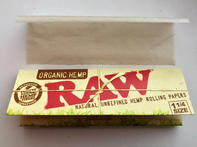Apart from hemp oil used in many industrial applications such as drying agent in paints, as a varnish and lubricant, the hemp plant (Cannabis sativa) can be used as paper, to extract toxins from the soil and as a fuel source.

Hemp as Paper
Hemp’s use as paper can be traced back to 200 - 150 B.C. when in China it was made by shaping pulped hemp into thin sheets. In the 7th century, paper mills were built in the Middle East and in China. In industrial uses for hemp, paper spread further westwards. Bibles and the novels of writers such as Mark Twain were printed on hemp paper and in Russia hemp was used to print money and stamps.
In industrial uses for hemp, paper can be made from the long bast fibre or short pulp fibre. Paper made from the long fibres is thin and rough. Paper made from the short-fibre pulp may not be as strong, but easier to make, softer and thicker and more suitable for everyday use. In addition, hemp is more eco-friendly as hemp only takes 120 days to grow to maturity compared to the years it takes for a tree to grow.
Hemp as Toxin Sponge
Hemp plants can be used in a process to restore soil from toxic pollution, pulling the toxins of the soil like a sponge. Hemp was even used to remove radioactive agents from the ground following the radioactive disaster at Chernobyl in Russia in 1986.
Further research in 2012 showed hemp effectively absorbed cadmium from the soil as well. Cadmium is a byproduct from the emission of fossil fuels. In industrial uses for hemp it can clean up toxins in the soil including metals, pesticides, crude oil and toxins in landfills. Hemp grown on toxic soil must not be used for human application.
Hemp as Biofuel
Researchers at the University of Connecticut found that diesel fuel can be manufactured from the seeds of industrial hemp. The university’s research shows that hemp oil had a 97% conversion rate into biodiesel and that the biodiesel is suitable for any conventional diesel engine.
The rest of the plant can be used to produce ethanol or methanol. Sometimes referred to as “hempanol” or “hempoline” this type of fuel is made through a process called cellulolysis which ferments and distils the hemp to extract the ethanol. Ethanol is distilled after the fermentation of the plant material and methanol is produced after dry distillation of the woody hemp pulp.
By Marinda Louw